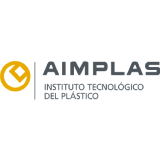Green point – do you know what it means?
The first answer that will come to your mind is that it is just that: a dot, in green. But no, it is not just that.
What is the green point?
The green point is a symbol visible on all packaging managed by a Collective Extended Producer Responsibility System (EPRS).
The function of the symbol is simple: to indicate to the consumer that the packaging companies that place their products on the market finance and take responsibility for their correct post-consumer management. To this end, the companies adhere their packaging to a EPR (Extended Producer Responsibility) System such as Ecoembes or Ecovidrio, which guarantees its recovery and recycling. In this way, packaging waste becomes a resource, giving it a second life.
The green point is not only a symbol, but also a guarantee that packaging producers comply with European Directive 94/62/EC and national law 11/97 on Packaging and Packaging Waste, which establishes EPR as a mandatory measure.
What packaging can it appear on?
This emblem can appear on plastic, metallic, brik type and cardboard and paper packaging, which are managed in Spain by Ecoembes.
It also appears on glass packaging, which is recovered in Spain by Ecovidrio.
What rules must it follow?
The Green point must be perfectly visible and guarantee durability even after the container has been opened. It must maintain certain proportions and be subject to specific rules of use.
In order to facilitate its identification and legibility to the final consumer, it must be taken into account that:·
- It may not be modified
- · It must be printed in its entirety
- · Its proportions must be respected
- · It may not be completed with graphic elements
- · It cannot be modified without the authorisation of Ecoembes.
Despite its name, the Green point is not always in this colour. In order to avoid additional costs, it is allowed to adapt the symbol to the colours used on the packaging, without changing its meaning.

What costs does Green point cover?
The Green point payment made by packaging companies or distributors is divided between the four phases of the waste management process: citizen contribution, selective collection, sorting of materials and waste treatment.
In the citizen contribution phase, which begins with the separation of packaging at home and without which the whole process is impossible, Green point covers the purchase, replacement, cleaning and maintenance of the containers, as well as awareness campaigns.
It is worth remembering that plastic containers, cans and briks should be deposited in the yellow container; paper and cardboard should be thrown in the blue container, while glass should be taken to the green igloo.
When the materials are in the container, the second phase, or selective collection, comes into play. This phase accounts for 45% of the total costs covered by the Green point, because it covers equipment costs, as well as the personnel who carry out the collection and the fuel to do it.
After collection, the materials are sorted. Once collected, they are transported to an industrial facility (sorting plant), where they are sorted by type of material. At this stage of the process, appropriate infrastructures, manpower, fixed and mobile equipment, etc. are required. Like the collection phase, the selection of materials accounts for around 45% of the costs.
Finally, once the waste has been sorted, the treatment stage begins, in which each material requires a specific process. After treatment, companies buy the materials and convert them into new raw materials.
Therefore, the companies’ commitment to sustainability is represented through Green point and its contribution to efficient waste management.
When did the Green point start?
In Spain, the Green point began to be used in 1997, when Ecoembes obtained its licence to use it through an agreement with Pro Europe (Packaging Recovery Organisation Europe). It is currently the model that most European countries have adopted for the recycling of packaging. In fact, 35 countries have adopted it and this means that more than 400 million Europeans can separate their waste in the different containers.
Thanks to the coordination of all the agents involved in the recycling process (companies, citizens, local councils and recyclers), 1,399,582 tonnes of household packaging were recycled from waste discarded in the yellow and blue containers in 2017. This is 3.5% higher than in 2016.
From now on, when you see packaging with a Green point, you know that this product is complying with the law, but that it will only enter the recycling process if you put it in the right container. This is the only way to save water, energy and raw materials. Because thanks to your collaboration, recycling is possible.













